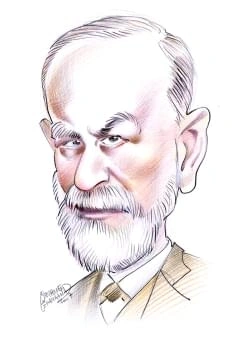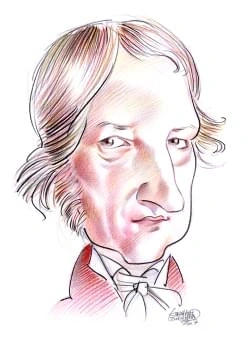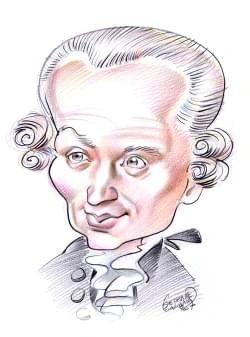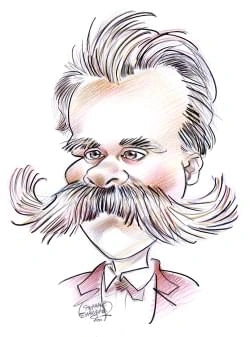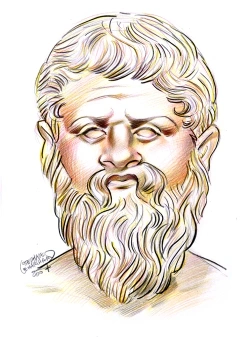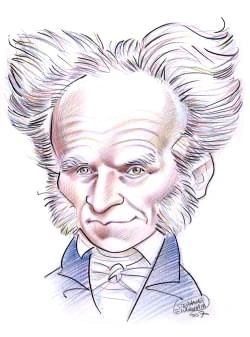697 résultats pour "including"
-
Comparative Anatomy.
In comparing two species, anatomists have to be careful to differentiate between homologous structures, which are ones that have evolved from a shared ancestor, andanalogous structures, which have developed from different origins. Homologous structures are built on the same underlying plan. A human arm, a bat’s wing, and awhale’s flipper look quite different from the outside, but the bones inside reveal that these limbs all have the same basic structure. Analogous structures, by contrast,often l...
-
South Africa - country.
The major soil zones are conditioned largely by climatic factors. In the semiarid north and west, soils are alkaline and poorly developed. In the southern part of WesternCape Province, rain falls mostly in the winter months, and soils there form slowly and are generally thin and immature. The moderate temperatures and summer rainfallof the High Veld and eastern coastal areas create conditions for more productive organic decomposition, leading to dark, fertile soils, or chernozems, similar to tho...
-
Mammal - biology.
On land, mammals live in many different habitats, and at a wide range of altitudes. Many mammals dig burrows as refuges or as places to raise their young, but somehave developed a largely subterranean lifestyle, feeding on small animals or plant roots beneath the soil's surface. These animals, including moles and mole-rats, digthrough the ground either with spadelike front paws or with their teeth, and they detect danger by being highly sensitive to vibrations transmitted through the soil.Most m...
-
New Jersey - geography.
C Soils Broadly defined, all of New Jersey’s soils are podzolic soils; that is, they are acidic and contain fairly high amounts of iron oxides. The soils in northern New Jersey areirregular in quality and contain rock fragments and small stones deposited by the continental glaciers of the last Ice Age. The soils of the inner coastal plain, unaffectedby glaciation, are the richest in the state, while those of the outer coastal plain are generally infertile. The newer soil classification system d...
-
New Jersey - USA History.
C Soils Broadly defined, all of New Jersey’s soils are podzolic soils; that is, they are acidic and contain fairly high amounts of iron oxides. The soils in northern New Jersey areirregular in quality and contain rock fragments and small stones deposited by the continental glaciers of the last Ice Age. The soils of the inner coastal plain, unaffectedby glaciation, are the richest in the state, while those of the outer coastal plain are generally infertile. The newer soil classification system d...
-
Newfoundland and Labrador - Geography.
Precipitation averages about 1,120 mm (about 44 in) yearly in Newfoundland. In Labrador precipitation varies from about 1,020 mm (about 40 in) in the southeast toabout 510 mm (about 20 in) in the extreme north. Heavy winter snowfalls are common, especially in Newfoundland. D Plant Life About one-third of Newfoundland is forested, and most of the rest of the island is made up of barren areas of reindeer moss and lichens. The forests consist almostentirely of conifers. The most important species...
-
Newfoundland and Labrador - Canadian History.
Precipitation averages about 1,120 mm (about 44 in) yearly in Newfoundland. In Labrador precipitation varies from about 1,020 mm (about 40 in) in the southeast toabout 510 mm (about 20 in) in the extreme north. Heavy winter snowfalls are common, especially in Newfoundland. D Plant Life About one-third of Newfoundland is forested, and most of the rest of the island is made up of barren areas of reindeer moss and lichens. The forests consist almostentirely of conifers. The most important species...
-
Hungary - country.
Northern Hungary lacks sufficient water, especially between July and October, when precipitation levels are typically low. Canals irrigate the Great Hungarian Plain,which is subject to drought. Because of the country’s mainly flat terrain, only limited water resources can be harnessed for hydroelectric power. F Environmental Issues Rapid industrialization in Hungary following World War II contributed significantly to a number of major environmental problems, including air, water, and soil pollu...
-
-
Native Americans of North America.
addition to smallpox and measles, explorers and colonists brought a host of other diseases: bubonic plague, cholera, typhoid fever, scarlet fever, pleurisy, mumps,diphtheria, pneumonia, whooping cough, malaria, yellow fever, and various sexually transmitted infections. Despite the undisputed devastation wreaked on Indian populations after European contact, native populations showed enormous regional variability in their response todisease exposure. Some peoples survived and, in some cases, even...
-
Native Americans of North America - Canadian History.
addition to smallpox and measles, explorers and colonists brought a host of other diseases: bubonic plague, cholera, typhoid fever, scarlet fever, pleurisy, mumps,diphtheria, pneumonia, whooping cough, malaria, yellow fever, and various sexually transmitted infections. Despite the undisputed devastation wreaked on Indian populations after European contact, native populations showed enormous regional variability in their response todisease exposure. Some peoples survived and, in some cases, even...
-
Oregon - geography.
B Rivers and Lakes The Columbia River forms most of the Oregon-Washington boundary, and with its tributaries this great river drains a large portion of Oregon. From the point where theColumbia first touches the state, at Wallula Gap, the river runs in a shallow gorge, deepening as it approaches the Cascades. This part of the river once had manyrapids and falls, but is now navigable by large vessels because of dams and locks that have been built along much of its length. An important tributary o...
-
Oregon - USA History.
B Rivers and Lakes The Columbia River forms most of the Oregon-Washington boundary, and with its tributaries this great river drains a large portion of Oregon. From the point where theColumbia first touches the state, at Wallula Gap, the river runs in a shallow gorge, deepening as it approaches the Cascades. This part of the river once had manyrapids and falls, but is now navigable by large vessels because of dams and locks that have been built along much of its length. An important tributary o...
-
Saudi Arabia - country.
C Natural Resources Some of the world’s largest oil and natural gas fields lie beneath Saudi Arabia and its offshore waters, representing the country’s most economically important naturalresource. In 2007 Saudi Arabia’s oil reserves were estimated at 264 billion barrels. Before the discovery and exploitation of these reserves in the mid-20th century,Saudi Arabia was one of the poorest countries in the world. Its relatively small population subsisted in a harsh environment with little agricultur...
-
Iran - country.
Zagros mountains. In the more arid central part of the country, wild pistachio and other drought-resistant trees grow in areas that have not been disturbed by humanactivity. Tamarisk and other salt-tolerant bushes grow along the margins of the Dasht-e Kavir. A wide variety of native mammals, reptiles, birds, and insects inhabit Iran. Many species of mammals—including wolves, foxes, bears, mountain goats, red mountainsheep, rabbits, and gerbils—continue to thrive. Others—including Caspian tigers,...
-
Egypt - country.
Egypt has a wide variety of mineral deposits, some of which, such as gold and red granite, have been exploited since ancient times. The chief mineral resource ofcontemporary value is petroleum, found mainly in the Red Sea coastal region, at Al ‘Alamayn (El ‘Alamein) on the Mediterranean, and on the Sinai Peninsula. Otherminerals include phosphates, manganese, iron ore, and uranium. Natural gas is also extracted. D Plants and Animals The vegetation of Egypt is confined largely to the Nile Delta,...
-
Maine - geography.
temperatures range from 17° to 21°C (62° to 70°F) with the southern interior being the warmest and the east coast and north the coolest. However, daytime summertemperatures may reach the lower 30°s C (lower 90°s F), and temperatures in winter have fallen as low as -44°C (-48°F) in the interior. D2 Precipitation Precipitation (rainfall and snowfall) in Maine is evenly distributed throughout the year. Most areas receive from 860 to 1,020 mm (34 to 40 in) yearly, although parts ofthe coast are som...
-
-
Maine - USA History.
temperatures range from 17° to 21°C (62° to 70°F) with the southern interior being the warmest and the east coast and north the coolest. However, daytime summertemperatures may reach the lower 30°s C (lower 90°s F), and temperatures in winter have fallen as low as -44°C (-48°F) in the interior. D2 Precipitation Precipitation (rainfall and snowfall) in Maine is evenly distributed throughout the year. Most areas receive from 860 to 1,020 mm (34 to 40 in) yearly, although parts ofthe coast are som...
-
Arkansas - geography.
temperature rises to the upper 30°s C (lower 100°s F). C2 Precipitation Arkansas receives about 1,000 to 1,300 mm (about 40 to 50 in) of precipitation a year, and some areas receive even more. Most of the rain comes during winter andspring and at times is so heavy as to cause flooding. Snow is rare in the south but amounts to more than 250 mm (10 in) a year in the mountains. C3 Growing Season Arkansas has a long growing season. It averages 211 days for the state as a whole and ranges from 241...
-
Arkansas - USA History.
temperature rises to the upper 30°s C (lower 100°s F). C2 Precipitation Arkansas receives about 1,000 to 1,300 mm (about 40 to 50 in) of precipitation a year, and some areas receive even more. Most of the rain comes during winter andspring and at times is so heavy as to cause flooding. Snow is rare in the south but amounts to more than 250 mm (10 in) a year in the mountains. C3 Growing Season Arkansas has a long growing season. It averages 211 days for the state as a whole and ranges from 241...
-
USA - Iraq War - History.
B Making the Case for War B1 “Neoconservatives” and the Bush Doctrine Long before President George W. Bush took office in 2001, elements in or close to the Republican Party had called repeatedly for firmer U.S. steps against Iraq,including a war if necessary to force a regime change. One such group authored a white paper in 1996 called A Clean Break: A New Strategy for Securing the Realm , which was later sent to Prime Minister Benjamin Netanyahu, leader of Israel’s Likud Party. It advocated...
-
U.S.-Iraq War - U.S. History.
I
INTRODUCTION
U.S.-Iraq War, military action begun in
B Making the Case for War B1 “Neoconservatives” and the Bush Doctrine Long before President George W. Bush took office in 2001, elements in or close to the Republican Party had called repeatedly for firmer U.S. steps against Iraq,including a war if necessary to force a regime change. One such group authored a white paper in 1996 called A Clean Break: A New Strategy for Securing the Realm , which was later sent to Prime Minister Benjamin Netanyahu, leader of Israel’s Likud Party. It advocated...
-
Puerto Rico - geography.
the length of the day remains fairly constant throughout the year. San Juan has a mean July temperature of 28°C (83°F) and a mean January temperature of 25°C (77°F). The average temperature of the seawater surrounding theisland is 27°C (81°F), with little variation during the course of the year. The entire island is cooled by the trade winds from the northeast. This air also contains much water vapor. As the air is forced to rise over the mountains, it becomescooler and the water vapor condenses...
-
Aboriginal Australians - History.
Until Europeans began to settle in Australia in 1788, the Aboriginal way of life was supported by hunting, gathering, and fishing. Like other hunting and gatheringpeoples, Aboriginal people had an extremely detailed knowledge of their environment, especially plant ecology and animal behavior. The deep connection betweenAboriginal people and the natural world influenced every part of their culture, including their food gathering, tools, trade, religion, art, music, language, and socialorganizatio...
-
Slovakia - country.
The country is divided informally into the three regions of Western Slovakia, Central Slovakia, and Eastern Slovakia, corresponding to administrative divisions that wereabolished in 1989. Most of Slovakia’s 600,000 Hungarians live in the southern parts of Western and Central Slovakia, which served as the cultural center of Hungary forseveral centuries after Hungary proper was invaded by the Ottomans in the 16th century. The Ruthenian and Ukrainian minorities are concentrated in the northernregio...
-
-
São Paulo (city) - geography.
universities include the State University Paulista Júlio de Mesquita Filho (1976), and the even larger University of São Paulo (1934), which incorporates the city’s famousand influential Faculty of Law. Important private universities are Mackenzie University, originally founded by Presbyterian missionaries from the United States (1870);the Paulista University (1972); the Pontifical Catholic University of São Paulo (1946); and the University São Judas Tadeu (1971). The city is home to the São Pau...
-
International Law.
merchants), modernized the rights of neutrals during maritime war, and required blockades to be effective. The Declaration of Paris also initiated the practice of allowingnations other than the original signatories to accede (become a party to) to an agreement. In 1864 a conference convened in Geneva, Switzerland, at the invitation of the Swiss government. The conference approved a convention for the proper treatment ofwounded soldiers on the battlefield and the protection of medical personnel;...
-
Algeria - country.
areas to fishing. National parks, including the giant Tassili N’Ajjer National Park in the eastern corner of the country, comprise a large proportion of the protected area. The effects of Algeria’s human population on the fragile landscape have been severe. The greatest ecological threats are deforestation and burning of scrub vegetation,conversion of steppe habitat to arable land, and soil erosion due to overgrazing and poor farming practices. Pollution of Mediterranean coastal waters is pervas...
-
Labor Union.
B The Legal Environment The legal environment, which permits certain types of union activities and prohibits others, also influences the extent of union organization. States with right-to-worklaws have much lower unionization rates than other states. In the United States, the states with the lowest unionization rates are North Carolina, South Carolina, SouthDakota, and Arkansas—states that have right-to-work laws. In 2000 the unionization rate in these states ranged from 4.44 percent to 6.7 per...
-
Latin American Independence.
be inferior and were not permitted a university education. In the lowest caste were the African slaves. As the Spanish monarchy tried to increase its authority, it was hampered by the power of the Catholic Church. The church, including various religious orders, hadacquired great wealth, including large holdings of land, in the colonies. The Jesuit order especially had gained extraordinary wealth and political influence, and it alsocontrolled much of the university and high school education in th...
-
United Nations.
and programs to carry out its recommendations. It elects members to serve on certain agencies and programs, and it coordinates those programs through variouscommittees. B Security Council The Security Council is the most powerful body in the UN. It is responsible for maintaining international peace, and for restoring peace when conflicts arise. Its decisionsare binding on all UN members and have the force of international law. The Security Council has the power to define what is a threat to sec...
-
Christopher Columbus
I
INTRODUCTION
Christopher Columbus (1451-1506), Italian-born Spanish navigator who sailed west across the Atlantic Ocean in search of a route to Asia but achieved fame by making
landfall in the Americas instead.
explorers, adventurers, entrepreneurs, merchants, and any others who saw their fortunes tied to the trade winds and ocean currents. Columbus’s brother Bartholomewworked in Lisbon as a mapmaker, and for a time the brothers worked together as draftsmen and book collectors. Later that year, Columbus set sail on a convoy loadedwith goods to be sold in northern Atlantic ports. In 1478 or 1479 Columbus met and married Felipa Perestrello e Moniz, the daughter of a respected, though relatively poor, nob...
-
Christopher Columbus.
explorers, adventurers, entrepreneurs, merchants, and any others who saw their fortunes tied to the trade winds and ocean currents. Columbus’s brother Bartholomewworked in Lisbon as a mapmaker, and for a time the brothers worked together as draftsmen and book collectors. Later that year, Columbus set sail on a convoy loadedwith goods to be sold in northern Atlantic ports. In 1478 or 1479 Columbus met and married Felipa Perestrello e Moniz, the daughter of a respected, though relatively poor, nob...
-
-
Christopher Columbus.
explorers, adventurers, entrepreneurs, merchants, and any others who saw their fortunes tied to the trade winds and ocean currents. Columbus’s brother Bartholomewworked in Lisbon as a mapmaker, and for a time the brothers worked together as draftsmen and book collectors. Later that year, Columbus set sail on a convoy loadedwith goods to be sold in northern Atlantic ports. In 1478 or 1479 Columbus met and married Felipa Perestrello e Moniz, the daughter of a respected, though relatively poor, nob...
-
Christopher Columbus - explorer.
explorers, adventurers, entrepreneurs, merchants, and any others who saw their fortunes tied to the trade winds and ocean currents. Columbus’s brother Bartholomewworked in Lisbon as a mapmaker, and for a time the brothers worked together as draftsmen and book collectors. Later that year, Columbus set sail on a convoy loadedwith goods to be sold in northern Atlantic ports. In 1478 or 1479 Columbus met and married Felipa Perestrello e Moniz, the daughter of a respected, though relatively poor, nob...
-
Antibiotics.
In some species of bacteria the cell wall consists primarily of a thick layer of peptidoglycan. Other species have a much thinner layer of peptidoglycan and an outer aswell as an inner membrane. When bacteria are subjected to Gram's stain, these differences in structure affect the differential staining of the bacteria with a dye calledgentian violet. The differences in staining coloration (gram-positive bacteria appear purple and gram-negative bacteria appear colorless or reddish, depending on t...
-
Indianapolis - geography.
Amateur athletic competitions are frequent in Indianapolis. Each summer it is the site for the finals of the Hoosier State Games, with athletes of all ages and skill levelscompeting in 21 sports. In 1987 Indianapolis hosted the Tenth Pan American Games, and is often the site for numerous Olympic trials and collegiate sportschampionships. Among the many sports facilities are those for tennis, bicycle racing, skating, and track and field. The city’s professional football team, the Indianapolis Col...
-
Rome (Italy) - geography.
country’s best, and in the summer at the Baths of Caracalla. The city also has some 20 theaters and 6 major concert halls, which offer a varied repertory during the fall,winter, and spring. The museums of the city deal with all aspects of the arts and sciences and are among the world’s finest. The oldest art collection in Rome, housed in the CapitolineMuseum, was established in 1471 and contains exceptional antiquities. Among other Roman museums are the National Museum of the Villa Giulia, which...
-
Invertebrate - biology.
animals with a five-pointed design. They live in the sea and move with the help of tiny fluid-filled feet—another feature found nowhere else in the animal world. Zoologists recognize several different groups of worms. The phylum known as flatworms contains the simplest animals possessing heads. Nerves and sense organs areconcentrated in the head. Most flatworms are paper-thin and live in a variety of wet or damp habitats, including the digestive systems of other animals. Roundwormsrepresent anot...
-
Invertebrate - biology.
animals with a five-pointed design. They live in the sea and move with the help of tiny fluid-filled feet—another feature found nowhere else in the animal world. Zoologists recognize several different groups of worms. The phylum known as flatworms contains the simplest animals possessing heads. Nerves and sense organs areconcentrated in the head. Most flatworms are paper-thin and live in a variety of wet or damp habitats, including the digestive systems of other animals. Roundwormsrepresent anot...
-
Native American Religions.
In the worldview of most of the indigenous peoples of North America, there were also spiritual beings to be avoided. Native Americans of the Southwest in particular,such as the Navajo and Apache, dreaded contact with ghosts, who were believed to resent the living. These peoples disposed of the bodies of deceased relativesimmediately and attempted to distance themselves from the spirits of the dead, avoiding their burial sites, never mentioning their names, and even abandoning thedwellings in whi...
-
-
Cat.
I
INTRODUCTION
Cat, small, mainly carnivorous animal, Felis silvestris catus, member of
D Coat Colors The domestic cat's original coat color was probably grayish-brown with darker tabby stripes, a color that provides excellent camouflage in a variety of environments. Allother coat colors and patterns are the result of genetic mutations; for example, solid coat colors such as black and blue are the result of a gene that suppresses tabbystripes; an orange coat is the result of a gene that transforms black pigment to orange; and a solid white coat is the result of a gene that complet...
-
Cat - biology.
D Coat Colors The domestic cat's original coat color was probably grayish-brown with darker tabby stripes, a color that provides excellent camouflage in a variety of environments. Allother coat colors and patterns are the result of genetic mutations; for example, solid coat colors such as black and blue are the result of a gene that suppresses tabbystripes; an orange coat is the result of a gene that transforms black pigment to orange; and a solid white coat is the result of a gene that complet...
-
Human Disease.
disease can be transmitted through food infected with mutated proteins. B Spread of Infectious Disease Some pathogens are spread from one person to another by direct contact. They leave the first person through body openings, mucous membranes, and skin wounds,and they enter the second person through similar channels. For example, the viruses that cause respiratory diseases such as influenza and the common cold are spreadin moisture droplets when an infected person coughs or sneezes. A hand that...
-
Uruguay (country) - country.
Freedom of religion is guaranteed by the constitution of Uruguay. Three-quarters of the people belong to the Roman Catholic Church. There are also sizable Protestantand Jewish congregations. The official language is Spanish, which in Uruguay has been influenced by Italian vocabulary and pronunciation. C Education Uruguay has one of the highest rates of literacy in Latin America, at 98.2 percent of the adult population. Six years of primary education is compulsory, and Uruguay isone of the few n...
-
Criminal Punishment.
In the United States and Canada, younger offenders may be sentenced to highly regimented, military-style correctional programs known as boot camps. Generally,offenders volunteer to participate in boot camp programs to avoid other types of incarceration. At boot camps, officials subject offenders to strict discipline and physicaltraining. They also provide educational or vocational programs. Boot camps serve as an alternative to traditional, long-term incarceration and attempt to train offenderst...
-
Radar.
gathers the weak returning radar signals and converts them into an electric current. Because a radar antenna may both transmit and receive signals, the duplexerdetermines whether the antenna is connected to the receiver or the transmitter. The receiver determines whether the signal should be reported and often does furtheranalysis before sending the results to the display. The display conveys the results to the human operator through a visual display or an audible signal. B1 The Antenna The rec...
-
George Frideric Handel
I
INTRODUCTION
Handel's Water Music
In addition to his popular operas and oratorios, German-born composer George Frideric Handel wrote music in the 1700s
for the church and for royal celebrations.
During the 1720s and 1730s Handel worked primarily as a composer and producer of operas for the London stage. This extremely productive phase of his career beganwith the opening of the Royal Academy of Music in London in 1719. The Royal Academy was founded with the support of the king and aristocratic subscribers for theproduction of Italian operas. Its directors sent Handel to continental Europe to hire some of the world’s greatest singers. Handel was not the only composer writingoperas for Aca...
-
?stanbul - geography.
İstanbul hosts a number of annual cultural events. The İstanbul Cultural Festival, held in the summer, offers music and dance performances in more than 50 venuesthroughout the city, including outdoors at Rumelihisar ı. The city also hosts a summer jazz festival. Turkey is one of the world’s largest producers of motion pictures, anda highly regarded international film festival takes place in İstanbul during the early months of the year. V RECREATION With increasing modernization, recreation is...
-
-
Discrimination.
Throughout United States history many other groups have suffered racial or religious discrimination. Since Europeans first came to America, Native Americans havebeen forcibly deprived of their lands and denied civil rights. Congress enacted the Indian Civil Rights Act in 1968, and the federal courts have entertained a number ofsuits designed to restore to Native American tribes ancestral lands and hunting and fishing rights. Many religious groups, including Roman Catholics, Jews, and others,have...
-
Greenhouse Effect.
addition, humans cut down huge tracts of trees for lumber or to clear land for farming or building. This process, known as deforestation, can both release the carbonstored in trees and significantly reduce the number of trees available to absorb carbon dioxide. As a result of these human activities, carbon dioxide in the atmosphere is accumulating faster than Earth’s natural processes can absorb the gas. By analyzing airbubbles trapped in glacier ice that is many centuries old, scientists have d...
}})
